|
Zrinyi 105mm Assault Gun |
Bronco Models, 1/35 scale |
 |
| by Steve Zaloga |
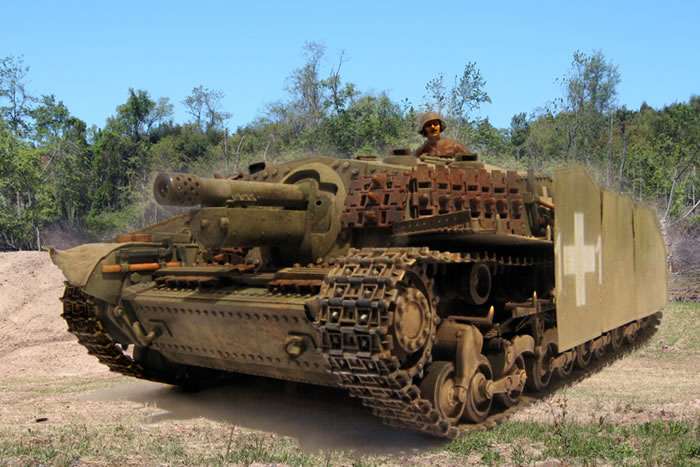

Description
The Zrinyi was a Hungarian assault gun based on a version of the earlier Turan tank. It was built in small numbers and saw combat in central Europe in the 1944-45 fighting. I built a Commander’s resin model of this vehicle some years ago, and I was pleasantly surprised to see Bronco tackle this obscure subject.
Overall, the kit is very well done. It is a multi-media kit and includes photo-etch for the side skirts as well as many small details. A partial interior is provided, including the driver’s area and the gun assembly. I’m not sure how much good this will do unless more reference material on the interior materializes, since the kit lacks the rear firewall, transmission, and any other internal stowage. I have a better-than-average reference library on Hungarian AFVs, and interior information on the Zrinyi is non-existent. There is still an example at Kubinka, so perhaps something will turn up. I would assume that Bronco had access to the Kubinka vehicle, as many details suggest more than a casual acquaintance with the design. The kit comes with open hatches for both the fighting compartment and engine compartment, but this is not especially useful barring some major data dumps on interior details. There is some interior detail on the kit hatches.
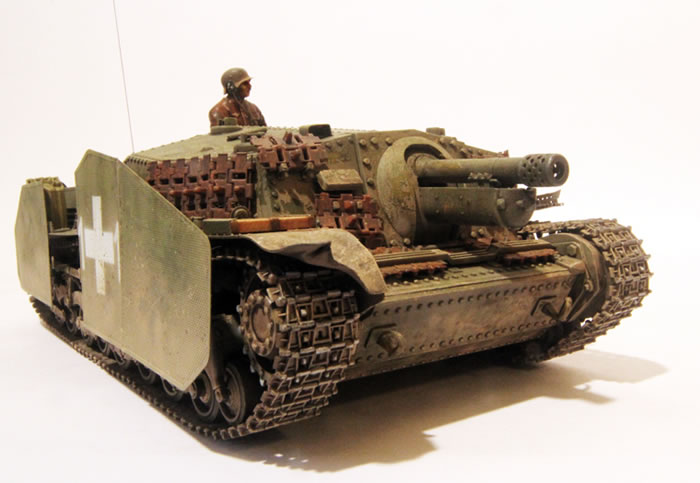
The kit is well designed, and the assembly is straight-forward. Bronco’s instructions are tricky as usual, as they tend to recommend putting a lot of small detail on the parts before assembling the main components. Modelers would be well advised to plan the assembly before proceeding, and use the instructions only as a rough guide.
Of all the assemblies, the suspension is the most problematic. It is very well detailed, but the parts’ fits on some of the axle and bogie assemblies are not very tight. Bronco is still playing with toy-like working features, and as a result, the suspension is designed to move. As a result, the modeler is left with a bunch of loose sub-assemblies that make it difficult to line up the suspension. The track is individual link, but fortunately the fit is good. The snap-fit feature is nice, but I found that a large portion of the track links suffer from a failure to remain attached after clicking together when the nub is sheared off in the assembly process. As a result, the track needs to be glued together at some point. Overall, the suspension assembly process was not as hair-raising as their recent Chaffee kit, but it was no joy due to sloppy fit.
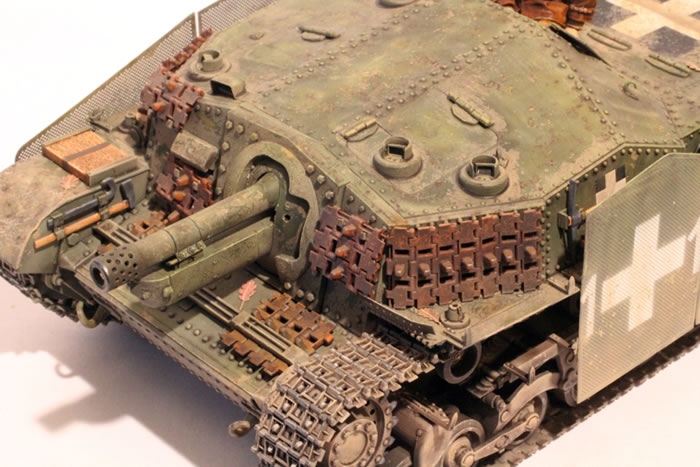
The rest of the vehicle goes together fairly well. There are some odd omissions. The engine grating on the roof is nicely depicted, but leads directly into an empty chasm. I plated this closed with some sheet plastic before sealing up the hull. The air intake ports on the side come as one piece assemblies; if modeler’s wish to depict the intakes open, the front and rear pieces need to be separated, and the remaining panels folded down; there are no instructions for this in the kit.
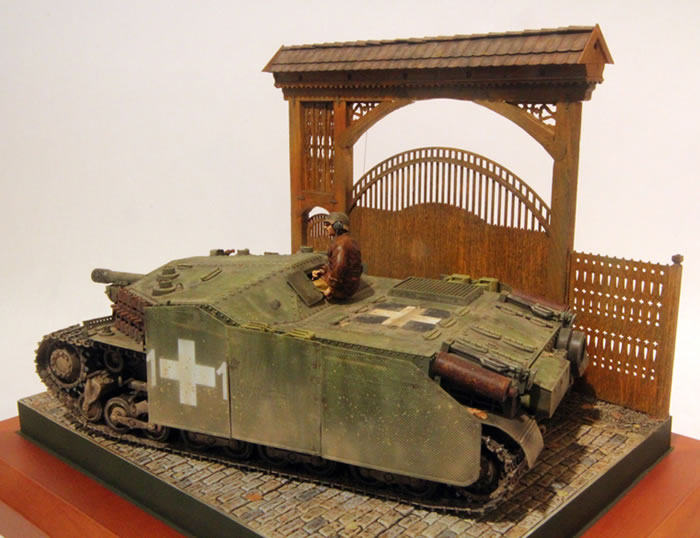
The kit can be built either as the original configuration without the side skirts, or the late version with side skirts. The side skirts come as single-piece sheets of photo etch. If used straight out-of-the box, they will provide a rather plain and unconvincing appearance. I separated the panels by scoring and bending the panels using a hold-n’-fold tool. Attachment of the side skirts to the vehicle is the single most challenging aspect of the assembly. The PE fret includes a few dozen little attachment loops that have to be fitted to the side skirt. Conventional assembly using CA glue or 5-minute epoxy is dubious due to strength issues as well as the risk of having the liquid cement clog neighboring holes in the side skirt armor. I decided to solder the loops to the side skirts by first silvering the inner face of the loops before folding them into shape. This makes it much easier to attach them to the side skirts without a lot of loose solder flowing about. I was pleasantly surprised to find that the locations for the loops on the PE skirts were accurate and that the loops do line up reasonably well to the bayonet mounts on the tank hull. Nevertheless, this aspect of the model will no doubt provide the most hazard to modelers. Less ambitious souls should stick with the early version.
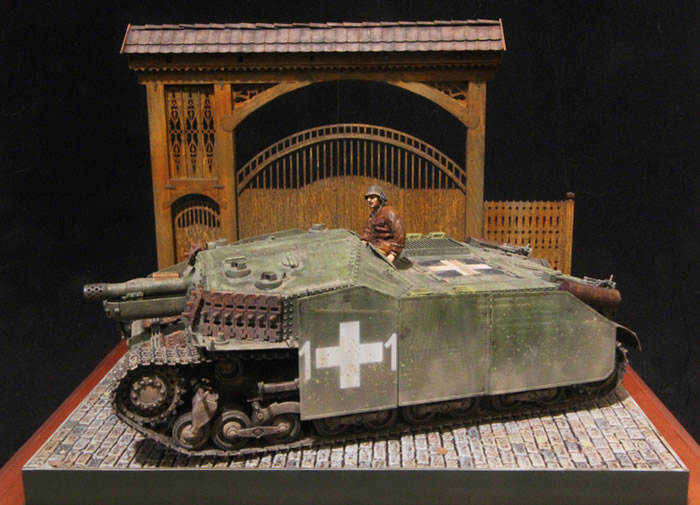
The decal selections are simple but reasonably complete considering the lack of many historical photos, especially of the late version with side skirts. The kit does come with a clever PE mask for the markings on the side skirt.
I mounted my model on a small vignette base based around a Mini-Art cobblestone street and laser-cut wooden Transylvanian rural gate kit from the Hungarian company Limes Models. The Limes laser cut kit is extremely sophisticated with very nice detail and excellent fit; I ordered directly from their website.
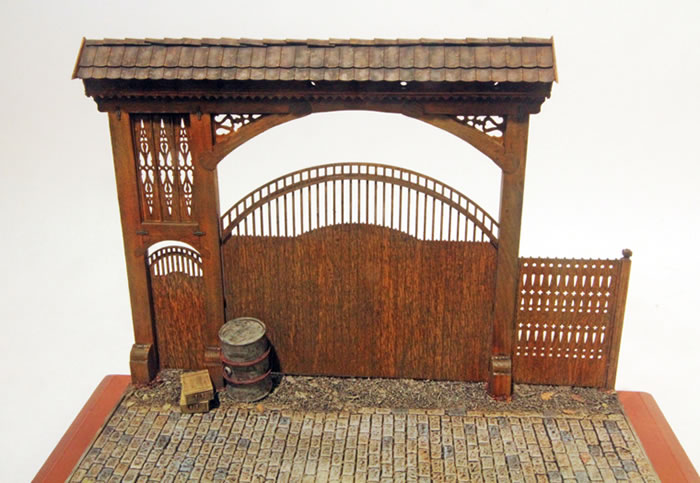
The Zrinyi crew figure is from the Bodi series which offers a number of Hungarian armor crew figures from various period. This figure depicts the late-war style of helmet with head-sets.
Model, Images and Text
by Steven J. Zaloga
Page Created 16 September, 2012
Page Last Updated
16 September, 2012
|